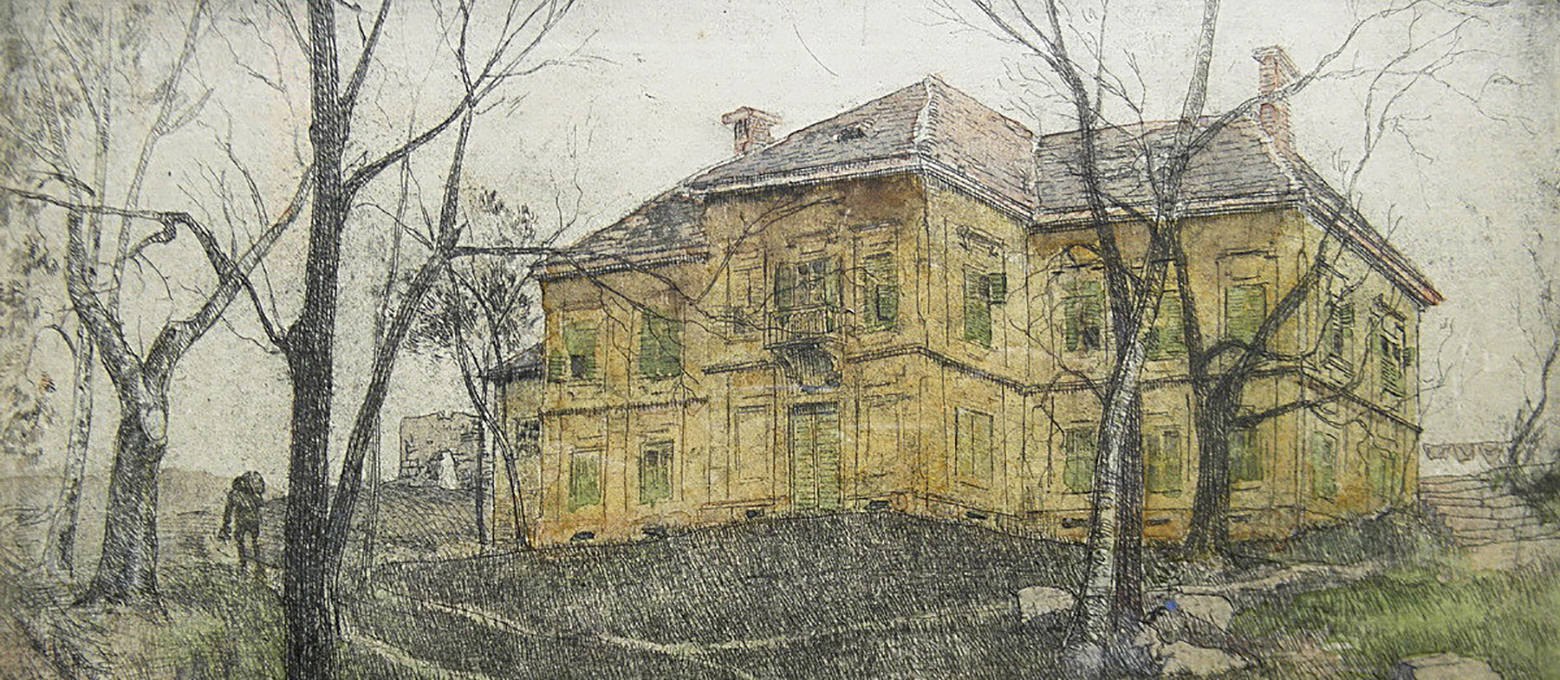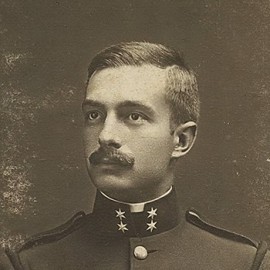

Zombory Moldovan Bela
1885 – 1967A painter, graphic artist, illustrator
- Biography
- Portfolio of works
- Photo archive
- Bibliography
Biography
He was born on 20 April 1885 in Mukachevo.
The artist's mother died when the boy was ten years old. As an artist, until 1933, Bela created under the name Moldovan. However, to pay tribute to his mother, as well as to dissociate himself from the artist Istvan Moldovan, he added to his mother’s maiden to his surname – Zombory. Thus, the artist began signing works Bela Zombory Moldovan.
The future artist studied at the Budapest Academy of Arts, where his teachers were Hegedűs László, Székely Bertalan, and Ferenczy Károly. In 1905, Bela continued to improve his skills in the artistic colony of the city of Nagybanya. Subsequently, the artist went to get acquainted with the world of art in Germany, Italy, France and Belgium.
Return to Budapest inspired the artist even more. He was actively painting, and from 1909 to 1914, he was also teaching at the School of Drawing and Applied Arts in Székesfehérvár (Hungary). A talented young artist was a real dandy, the favourite of women, he belonged to a bohemia and loved enjoying life.
Suddenly all that kind of established, safe world was broken by the war at one moment. Later, in autobiographical memoirs “Burning of the World. Memoirs of 1914”, Bela Zombory recalled: “In Hungary, there was no war for almost seventy years. When my grandfather talked about the events of 1848, we listened to him, but we were bored: everything was so alien, so distant from us. We lived in the twentieth century! Europe is balanced in the Age of Enlightenment and democratic humanism. It seemed impossible that disputes would be solved militarily.”
The news of the beginning of the First World War reached the artist when he spent his summer holidays at the Adriatic coast resort with other Hungarian artists, lawyers and teachers. The photos of these carefree people, subsequently posted on the cover of the author's book, were made three days before the war.
Then there was conscription, short-term training and departure to the front in the rank of junior officer. His regiment was stationed in Halychyna on the Austrian-Russian border. From the first days at the front, the author noted that the Austrian army was more focused on the parade marches in favour of the generals and did not give priority to proper armament and ammunition. The multinational Austro-Hungarian Empire also conscripts those who spoke different languages and did not understand the military commands in German or Hungarian. All these misunderstandings, together with other factors, led to massive, senseless human losses.
Bela depicted the soldiers with a sight of the artist: “In their eyes, it is shining the fire of the early sun. They look at life…” The artist regretted that the war – not a right moment to paint.
In the battle near Rava-Ruska, Bela was seriously injured in his head and was sent to the hospital. In 1916, the artist returned to Budapest to work at the information office of the Military Ministry. He was engaged in graphics, creating patriotic posters. His wounds healed, but a great nervous strain was wicked. Gradually, he returned to life, which he did not imagine without painting. At first, he was mainly engaged in illustrating books for young people. After the 1920s, he moved to portrait painting. The most famous portraits by the artist are those of Bishop Gyula Hlattfelder Chanada, an architect Toroczkai Wigand Ede, a sculptor Bori Yene, a sculptor Sikloidi Levrints and others. Many canvases were sold, located in England and the Netherlands. In our time, the artist's paintings can be seen at the Hungarian National Art Gallery.
From 1913 to 1947, the artist participated in exhibitions. Post-war years was the period of recognition and success of Bela Zombory Moldavan as a painter. His creativity, invariably realistic and unaffected by the modernist trends of the early 20th century, won numerous prizes and honours. In 1919, he was awarded the Tolnay Prize, in 1929 he won the Silver Medal at the World Exhibition in Barcelona, and in 1935, he was awarded the Bologna Prize. Subsequently, from 1935 to 1946, the artist returned to teaching and became director of the School of Drawing and Applied Arts in Székesfehérvár, and also held the post of adviser to the Minister of Education.
He was one of the founders and director of the Hungarian Society of Portrait Painters, a member of the Hungarian National Society for the Fine Arts, the General Secretary of the Hungarian Association of Fine Arts.
Bela Zombory Moldavan was a decent man, a true gentleman. Despite the conservative ideas that he professed throughout his life, the artist did not support the authoritarian regime of Miklos Gorti and refused to join the so-called Vitézi Rend, established by the government. The great humanity of the artist was also evidenced by the fact that during the Second World War, despite the danger, he hid the Jewish family to save their lives.
The communist regime, established in Hungary after the war, became not only a national catastrophe but also a personal tragedy for Bela. The secret police questioned the artist, and in 1946, he got caught in the cleaning of “right-wing elements”, during which about sixty thousand officials were fired. Bela retired from the post of Director of the School of Drawing and Applied Arts. The artist was expelled from all artistic unions and societies, and since he was classified as an “unreliable” person, he could not sell his paintings.
After such traumas, the artist moved to a country house, which he acquired in the 30s in Balatonfüred, western Hungary, where he fully devoted himself to painting. There were born his beautiful watercolours. The artist was a member of the Balaton Artistic Colony, founded in 1926.
Bela Zombory Moldavan died in Balatonfüred on 20 August 1967.
In 2014, on the occasion of the 100th anniversary of the First World War, the world saw the book of Bela Zombory Moldavan “Burning of the World. Memoirs of 1914”. The English translation was made by the author’s grandson – Peter Zombory Moldovan. Immediately after publishing this psychological and dramatic description of the first eight critical months of the war, the book received numerous approvals from literary critics of influential world editions, including The Wall Street Journal. A book review of New York took the edition to the section of the classic.
Text: Liudmyla Kozlovska
© Art & Culture Foundation Brovdi Art
Portfolio of works
© Zombory Moldovan Bela








































© Zombory Moldovan Bela
Matching content source: photos of the art works are taken from public sources (list)
Photo archive















Sorry, we did not find anything
Bibliography
Публікації в Інтернет-ЗМІ
Козловська М. Забуті імена закарпатських митців: про Зомборі Бейлу // Карпатський вісник. - 2018. - 23 жовтня. - http://karpatvisnuk.com.ua/lifestyle/culture-and-spirituality/zabuti-imena-zakarpatskix-mitciv-pro-zombori-bejlu.html
Зомборі-Молдован Бейла // Сторінка. - http://www.zombory-moldovan-bela.com/
Зомборі-Молдован Бейла // Вікіпедія. - 2018. - 5 травня. - https://hu.wikipedia.org/wiki/Zombory-Moldov%C3%A1n_B%C3%A9la
Зомборі-Молдован Бейла // http://www.kieselbach.hu. - http://www.kieselbach.hu/muvesz/zombori-moldovan-bela-_zombory-moldovan-bela__5292
Az elfeledett magyar festő, aki megjárta az első világháború poklát // konyves.blog.hu/ - 2014. - 28 вересня. - https://konyves.blog.hu/2014/09/28/az_elfeledett_magyar_festo_aki_megjarta_az_elso_vilaghaboru_poklat
Lángokban a világ // http://latoszogblog.hu. - 2015. - 30 червня. - http://latoszogblog.hu/blog/langokban_a_vilag
Matching content source of the published art works:
www.mutargy.com
bela-zombori-moldovan.artworkdatabase.com
http://siofok-galeria.hu
- Biography
- Portfolio of works
- Photo archive
- Bibliography
